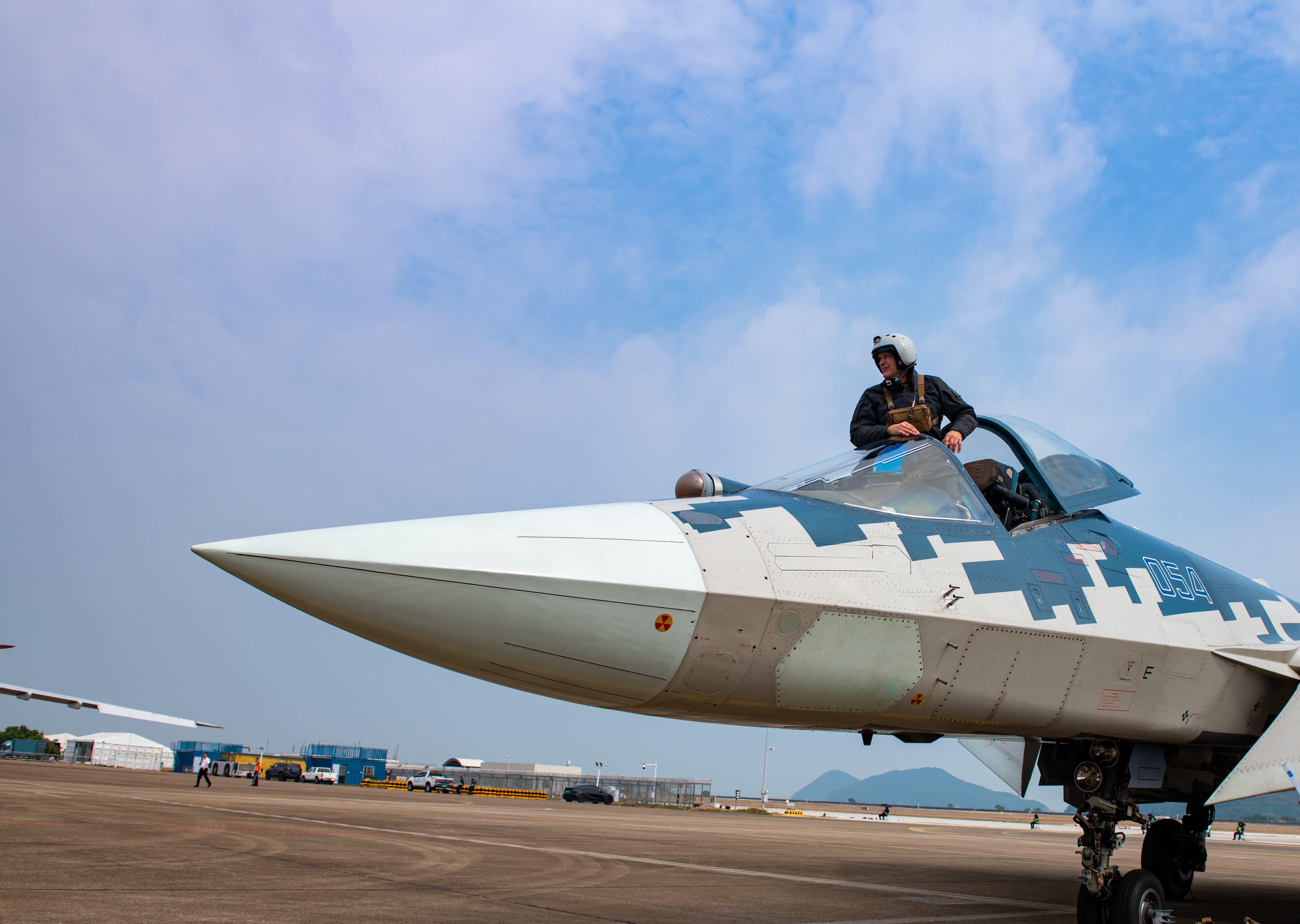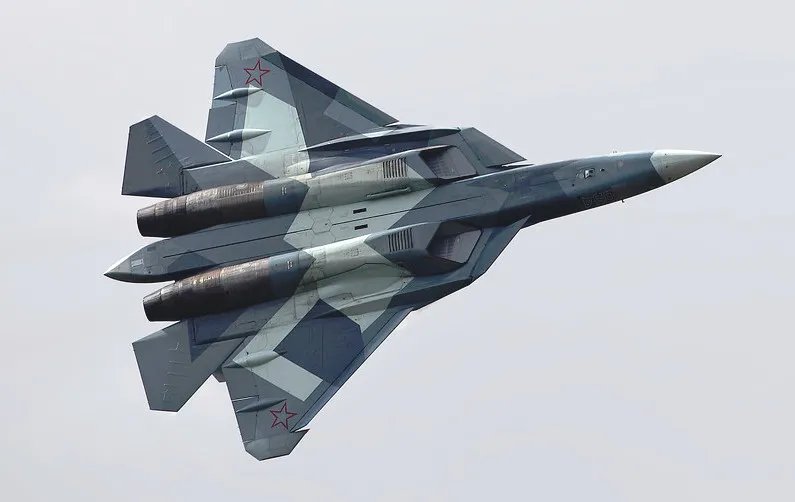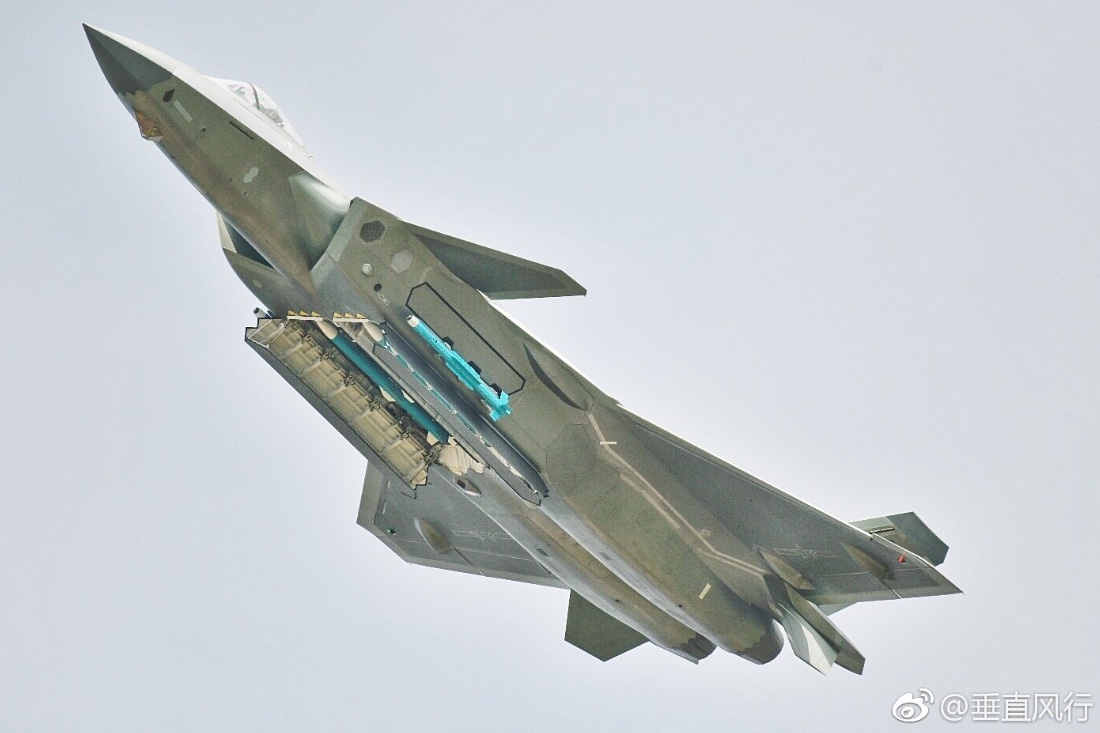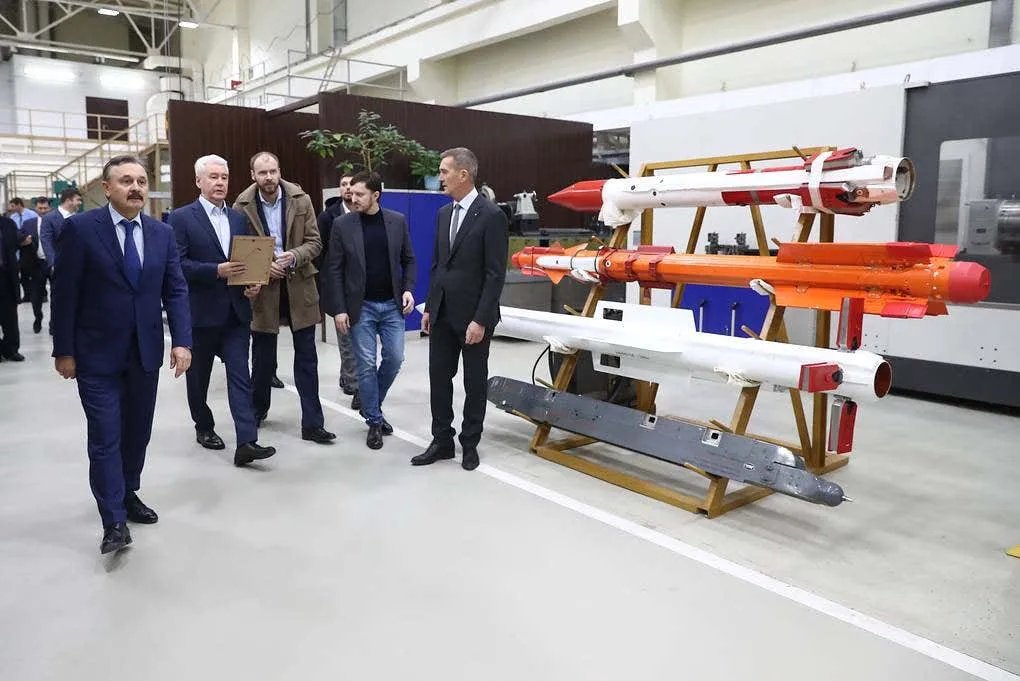The arrival of two Su-57 Felon prototypes for the upcoming Airshow China has provided a good look at many details on Russia’s most advanced fighter, although the most interesting has been a first close-up view of its small wing-root weapons bays. At TWZ we have previously examined this feature as well as the air-to-air missiles that are understood to be accommodated in the bays. While long known about, the weapons bays’ details had remained something of a mystery and it remains unclear exactly how they function.
The photo of the Su-57 showing the starboard-side wing-root weapons bay can be seen in the tweet embedded below, together with a close-up of the same image:
The first Su-57 for Airshow China arrived at Zhuhai Jinwan Airport in South Central China’s Guangdong province on November 3, flying from Russia with a fuel stop at Taiyuan Wusu International Airport in northern China. This aircraft is the fourth prototype, or T-50-4, coded ‘054 Blue.’
The second Felon for the exhibition — the seventh prototype, T-50-7, ‘057 Blue’ — arrived at Zhuhai in a disassembled state aboard an An-124 cargo aircraft and it will be used as a static exhibit only. The Felon is making its debut at Zhuhai, its first foreign airshow appearance.

The public has had unprecedented access to T-50-4, in particular, with numerous videos and photos having been posted on social media.
Many comments have been made about the supposedly poor build quality of the jet, with very many visible gaps between surfaces and prominent screws and rivets that are far from flush with the surface. It should be recalled that this is an early prototype aircraft, with a lower standard of finish than production examples and, moreover, that the Su-57 is not designed to have anywhere near the same degree of stealth as Western fifth-generation fighters. Indeed, its overall design philosophy — which is highly influenced by Russia’s low observable design and material science limitations — is very different, as we have discussed at length in the past.

Returning to the wing-root weapons bays, one of these was seen during the reassembly of the T-50-7 at Zhuhai. The bays take the form of triangular-section fairings that are intended for quick launch — the clamshell-like doors popping open for a missile to be released and rapidly closing, to help maintain the jet’s radar signature. These bays are in addition to the two large internal weapon bays that are arranged in tandem between the engines and which can carry much larger stores.
Back in 2020, the Russian Ministry of Defense published a video showing a short-range missile launch from a pre-production Su-57’s wing-root bay, but no details of the bay itself could be seen.

The missile launch clip begins at approximately 1:19 in the runtime of the video below:

Even with the photo from Zhuhai, it’s still not possible to determine exactly how missiles are launched from these bays, although a trapeze mechanism, broadly similar to the one the U.S. Air Force’s F-22 Raptors use to launch AIM-9 Sidewinder missiles from their cheek bays, likely extend the missile outward at an angle into the Su-57’s slipstream. The missile launch video also appears to support this hypothesis. While the LOAL mode wouldn’t be required if the missile can be extended on a trapeze before launch, it would still be a very useful feature to call upon.

There is no evidence that the Su-57 wing-root bay doors can close or partially close with the missile extended, similar to the novel design found on China’s J-20.

In the Su-57, each of the wing-root bays is understood to carry a single infrared-guided air-to-air missile, namely the K-74M2 (also known as the izdeliye 760) for close-air combat, produced by the Vympel missile design bureau.
The K suffix denotes a missile that is still in the development phase, with the production version of the izdeliye 760 being the R-74M2. For now, its exact service status is unclear. In early 2021, the International Institute for Strategic Studies (IISS) think tank suggested that the K-74M2 was “in the final stages of testing.”
As we have discussed before, the K-74M2 is optimized for internal carriage by the Su-57, with reduced dimensions and it also adds a new infrared seeker from the Russian Azov AOMZ company. Other changes over the earlier R-73 and R-74 missiles include a rocket motor with increased burn time, for longer range and a higher end game energy state. Published specifications for the K-74M2 include a maximum range of 31 miles, compared to 25 miles for the R-74, and 18.6 miles for the R-73.
Missile range figures are often dubious at best and the K-74M2’s true real-world range will differ based on the flight profile of each engagement and the target’s behavior, which can vary considerably. For example, if a lot of maneuvering energy is needed to reach the target, that impressive range figure could be reduced to a handful of miles.
Importantly, the K-74M2 can reportedly also be fired in lock-on-after-launch (LOAL) mode, which means the seeker head can remain concealed within the bay during the target acquisition phase. Using LOAL, the missile begins its flight under inertial control, with a datalink allowing the launch aircraft to provide target updates during missile flight, before achieving an in-flight lock-on.
It’s also worth noting that, in 2019, images emerged of what appeared to be a new, compact Russian air-to-air missile, derived, at least in part, from Vympel’s medium-range R-77 series. Its overall size and other design elements suggested it could potentially also be intended to fit inside the Su-57’s wing-root bays, although it was not the K-74M2, which was ultimately revealed to be much closer in form to the R-73 and R-74 from which it was derived.

Since then, it was reported that Russia was pressing ahead with an all-new ‘clean-sheet’ short-range missile to supersede the R-73 and R-74 series, the original design of which dates back to the Cold War.
This new missile is the izdeliye 300M, also from Vympel, which is likely to be a continuation of an earlier advanced short-range air-to-air missile program, the izdeliye 300, which was canceled in the 1990s in favor of further development of the tried and tested R-73.
It’s not clear whether the izdeliye 300M will also be scaled to fit the Su-57’s wing-root weapons bays, but that would seem possible, provided that its development continues.
As well as the K-74M2, there are other air-to-air weapons tailored for internal carriage in the Su-57, albeit in its larger under-fuselage weapons bays, including the beyond-visual range R-77M (izdeliye 180) and the very-long-range-range (estimated at 186 miles) izdeliye 810 missiles. These are also based on existing designs, the R-77 (AA-12 Adder) and the R-37M (AA-13 Axehead), respectively.
While there is still more to learn about the Su-57’s wing-root weapons bays, it’s meanwhile clear that Russia is busy exploring the integration of new weapons on the aircraft. This has very likely also included combat trials of weapons in Ukraine, on a more extensive basis than was the case during the Felon’s very brief operational, or semi-operational deployment to Syria.
The appearance of the Su-57 at Airshow China is also notable, with Russia clearly trying to drum up export interest in the fighter, which has so far secured only 76 orders from the Russian Ministry of Defense. Plans to jointly develop a version of the Felon for the Indian Air Force collapsed when India dramatically walked away from the program in 2018. Since then, the Su-57 has been pitched unsuccessfully to Turkey, while Algeria, Egypt, and Vietnam — as traditional buyers of Russian military technology — have all been suggested as possible customers. Securing a foreign customer is very likely a prerequisite for Sukhoi completing the development of the improved Su-57M version, which is planned to be fitted with more powerful engines for enhanced performance.
In the meantime, continued weapons testing is helping move the Su-57 closer to a true operational capability. Whatever way they work, it appears the wing-root bays will be a fundamental part of the Felon’s frontline armory, providing a valuable boost to its overall weapons capacity and possibly introducing a capable new short-range air-to-air missile in the process.
Contact the author: thomas@thewarzone.com
